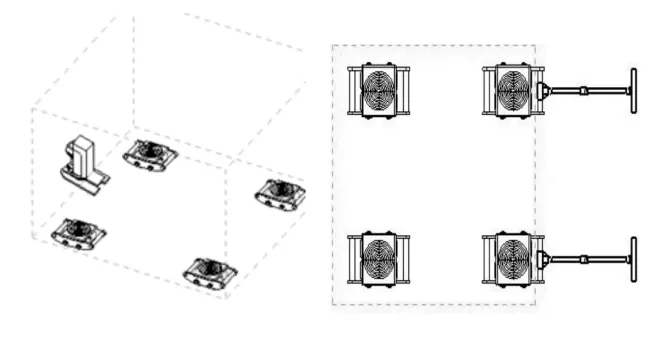yard gantry crane
The Yard Gantry Crane A Key Player in Modern Logistics
In the ever-evolving world of logistics and material handling, the yard gantry crane has emerged as a crucial piece of machinery, facilitating the efficient movement of heavy loads in various industrial settings. These versatile cranes are predominantly used in ports, rail yards, and storage facilities, playing an essential role in enhancing productivity and ensuring the smooth flow of goods.
What is a Yard Gantry Crane?
A yard gantry crane is a type of overhead crane typically designed with a horizontal beam that spans between two vertical supports, known as legs. The crane moves along tracks laid on the ground, allowing it to traverse large areas to load, unload, and transport goods. These cranes can lift considerable weights—often several tons—making them ideal for handling shipping containers, large equipment, and bulk materials.
Applications in Various Industries
The applications of yard gantry cranes are extensive and diverse. In shipping ports, they are instrumental in loading and unloading containers from cargo ships. The efficiency of these cranes significantly reduces the turnaround time of vessels, thereby optimizing port operations. In addition to shipping, yard gantry cranes are frequently employed in railway yards, where they assist in the swift transfer of containers between trains and storage areas.
Furthermore, manufacturing and construction industries take advantage of yard gantry cranes for tasks involving heavy machinery and components. Their ability to move loads with precision while maintaining stability makes them indispensable in construction sites where safety and efficiency are paramount.
yard gantry crane

Technological Advancements
With advances in technology, yard gantry cranes have undergone significant improvements over the years. Modern cranes are now equipped with sophisticated controls, including remote operation capabilities and automation features. These innovations not only enhance operational efficiency but also ensure the safety of workers by minimizing manual intervention.
Additionally, advancements in materials and engineering have led to the development of lighter, more robust gantry cranes. This means that they require less space and can operate in tighter environments without sacrificing performance. The integration of smart technology, such as sensors and IoT connectivity, allows for real-time monitoring of crane operations, contributing to predictive maintenance and reduced downtime.
Environmental Considerations
As industries strive to reduce their carbon footprints, yard gantry cranes are also evolving to meet environmental standards. Electric-powered cranes are becoming more prevalent, offering a cleaner and more energy-efficient alternative to traditional diesel models. These eco-friendly options not only comply with regulations but are also more cost-effective in the long run due to reduced fuel expenses and lower maintenance requirements.
Conclusion
The yard gantry crane is a vital asset in the logistics and material handling sectors. Its ability to efficiently manage heavy loads in various environments makes it an irreplaceable tool in modern industry. As technology continues to advance, we can anticipate further innovations in the design and functionality of these cranes, ensuring that they remain at the forefront of operational efficiency and safety in the years to come. Whether in bustling ports or busy construction sites, the yard gantry crane will undoubtedly continue to play a pivotal role in shaping the future of logistics and supply chain management.
-
Permanent Magnetic LiftersNewsNov.01,2024
-
Operations with an Adjustable CraneNewsNov.01,2024
-
Machine Moving SkatesNewsNov.01,2024
-
Industrial Lifting MagnetsNewsNov.01,2024
-
Effective Machinery MovingNewsNov.01,2024
-
Adjustable Gantry CraneNewsNov.01,2024
-
Unlock the Power of Lifting with Permanent Magnetic LiftersNewsOct.11,2024
